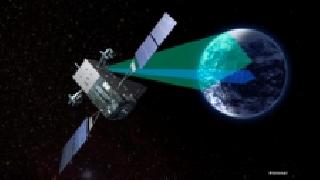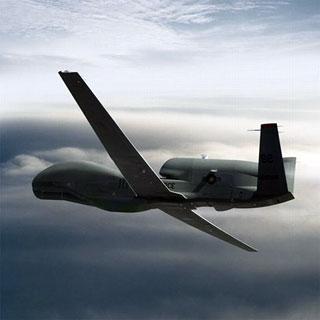
An artist's illustration of the SBIRS GEO-1 satellite in space. A Lockheed photo
DENVER (BNS): US Air Force’s new missile warning satellite, SBIRS GEO-1, has transmitted its first infrared images from space.
The spacecraft, launched two months ago, beamed down its first infrared image to the ground station on June 21.
The Lockheed Martin-built satellite “is performing as expected, and presently undergoing early orbit testing,” the company said.
The USAF’s Atlas-5 rocket had put in orbit the first geosynchronous (GEO-1) Space Based Infrared System (SBIRS) on May 7 to provide warning against possible missile attacks from across the globe.
After launch, the USAF/Lockheed SBIRS ground team executed a series of six Liquid Apogee Engine burns to propel the spacecraft to its geosynchronous orbital slot.
The team then deployed the satellite’s solar arrays, light shade and antenna wing assemblies. Most recently, the team opened the satellite’s payload doors and activated its sophisticated infrared sensors to begin the start of early orbit calibration and testing.
“SBIRS GEO-1 is performing flawlessly thus far, and the first image sent from the satellite is outstanding,” said Jeff Smith, vice president of Lockheed Martin’s Overhead Persistent Infrared (OPIR) mission area.
“We are focused on executing an efficient and thorough checkout of the spacecraft and ultimately delivering unprecedented infrared surveillance capabilities to our nation,” the official added.
The SBIRS GEO-1 has been designed to provide significantly improved missile warning capabilities while supporting other critical missions simultaneously including missile defence, technical intelligence and battlespace awareness.
The spacecraft, a first-of-its-kind, is equipped with highly sophisticated scanning and staring sensors. The scanning sensor will provide a wide area surveillance of missile launches and natural phenomena across the earth, while the staring sensor will be used to observe smaller areas of interest with superior sensitivity.
The USAF plans to operate four satellites under the SBIRS programme. It aims to use the SBIRS systems to protect its territory and troops from global and theater ballistic missile attacks.
 Previous Article
Previous Article Next Article
Next Article












The Indian Air Force, in its flight trials evaluation report submitted before the Defence Ministry l..
view articleAn insight into the Medium Multi-Role Combat Aircraft competition...
view articleSky enthusiasts can now spot the International Space Station (ISS) commanded by Indian-American astr..
view article